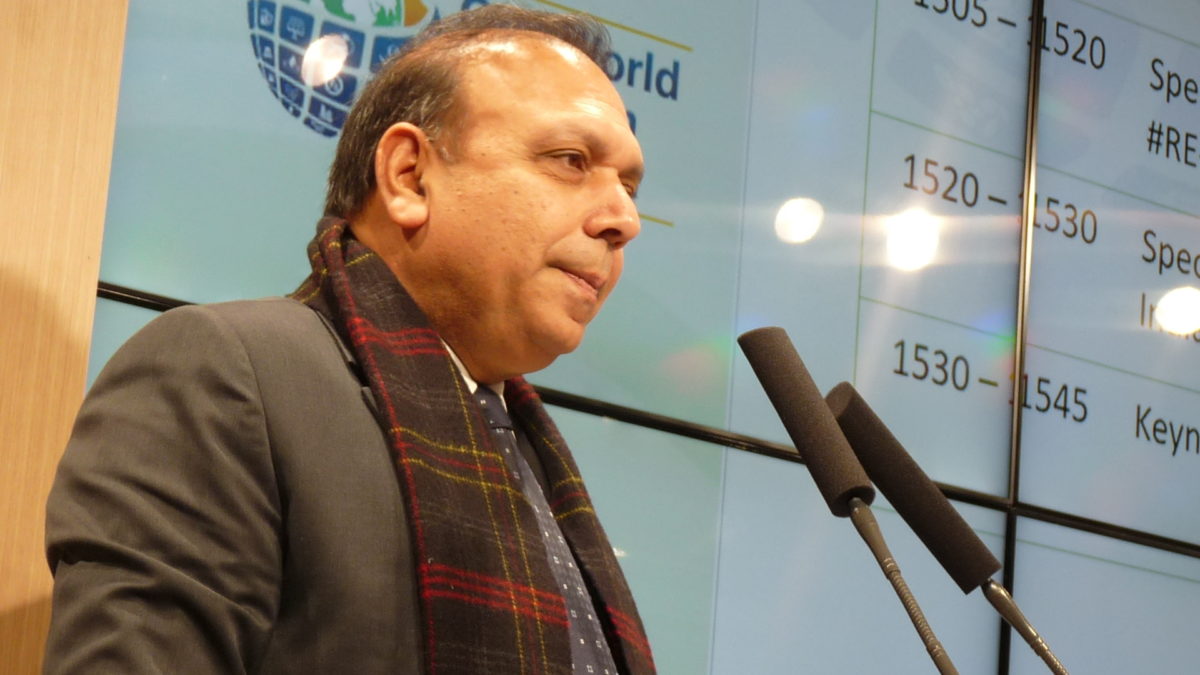With India 72 GW short of meeting its target of installing 100 GW of solar generation capacity by 2022, the Solar Energy Corporation of India (SECI) has gone into overdrive.
According to the agency’s website, it issued notices for tender relating to more than 6 GW of projects between Wednesday and Sunday. The flurry of procurement exercises – which have also occurred just a couple of months shy of national elections – related to floating solar and hybrid plants, grid-connected and inter-state transmission system-tied (ISTS) projects.
The glut of developer calls were for:
- 1 GW of grid-connected PV in India’s northeastern states;
- 1.2 GW of wind and solar hybrid schemes;
- 1.2 GW of ISTS-connected solar projects;
- 1.2 GW of ISTS projects alongside 3.6 GWh of storage;
- 14 MW of solar plant capacity with 42 MWh storage – split evenly between the Leh and Kargil districts;
- 750 MW of grid-connected solar in Rajasthan;
- 500 MW of grid-connected projects in Tamil Nadu;
- 150 MW of floating solar in Jharkand; and
- 250 MW of floating solar in Tamil Nadu.
With tension running high on the Pakistan border in Kashmir, there is a notable, 2 MW tender exercise planned in Jammu & Kashmir state which includes 1 MW for the Indian army post in Siachen which, at 18,875 ft above sea level, is often described as the world’s highest battlefield.
Tenders may not be enough
The blizzard of tender exercises comes after the Ministry of New & Renewable Energy announced in December its intent to procure 60 GW of solar capacity and 20 GW of wind power by March 2020. At the end of last year, India’s cumulative installed solar capacity stood at 28.05 GW, with 17.65 GW of projects under implementation.
Tenders in themselves, however, may not guarantee delivery of the capacity sought. Last year, SECI’s procurement was marred by a lukewarm response and auction postponements and cancellations due to the high resulting power tariffs. The agency’s hugely hyped 10 GW manufacturing-linked tender was postponed six times and finally attracted only one bidder; the country’s first wind-solar hybrid auction prompted only two bids, with 360 MW of the desired 1.2 GW of capacity having no takers at all.
SECI was not the only organization dogged by failed tenders. By September, the solar power agencies of central and state governments had scrapped bids for projects adding up to 9 GW of capacity – half the 18 GW put out for tender up to August.
Skepticism over solar target
Ratings agencies have voiced doubt about India’s ability to meet its ambitious 100 GW solar-175 GW renewable energy target. Rishab Shrestha, solar analyst at research and consultancy firm Wood Mackenzie, believes the nation will fall short despite a sizable increase in capacity, price stabilization and falling solar costs. “India faces short-term uncertainty due to the [imposition] of various taxes and levies on solar products, the cancellation of tenders and tariff re-negotiations,” said Shrestha in his latest report. “However, long-term development remains positive and India will continue to be [the] third-largest solar market globally in 2019.”
In its Rooftop Solar Market report, analyst Bridge to India predicted the nation will fall far short of its aim of installing 40 GW of rooftop capacity, under the 2022 ambition. Similarly, ratings agency CRISIL says 7-8 GW will be added in rooftop capacity up to 2023.
In August, CRISIL predicted that in the next four years, India could add 56-58 GW of solar capacity – a leap of almost 200% from the 20 GW added between 2014 and 2017. Even if CRISIL’s optimism sees tangible results, though, India would still miss the 100 GW solar target by a whisker.
This content is protected by copyright and may not be reused. If you want to cooperate with us and would like to reuse some of our content, please contact: editors@pv-magazine.com.








By submitting this form you agree to pv magazine using your data for the purposes of publishing your comment.
Your personal data will only be disclosed or otherwise transmitted to third parties for the purposes of spam filtering or if this is necessary for technical maintenance of the website. Any other transfer to third parties will not take place unless this is justified on the basis of applicable data protection regulations or if pv magazine is legally obliged to do so.
You may revoke this consent at any time with effect for the future, in which case your personal data will be deleted immediately. Otherwise, your data will be deleted if pv magazine has processed your request or the purpose of data storage is fulfilled.
Further information on data privacy can be found in our Data Protection Policy.